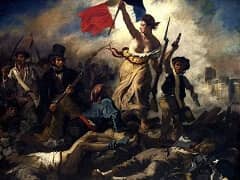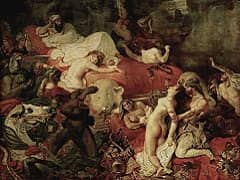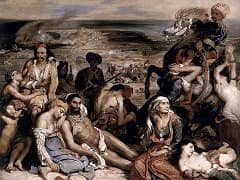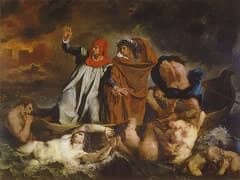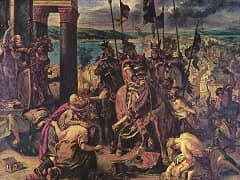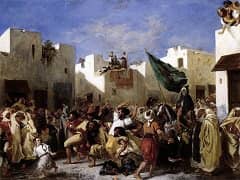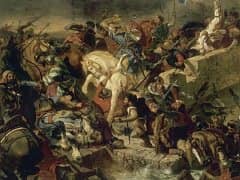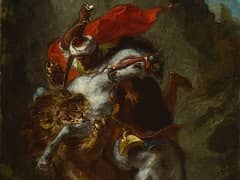The Battle of Nancy by Eugene Delacroix
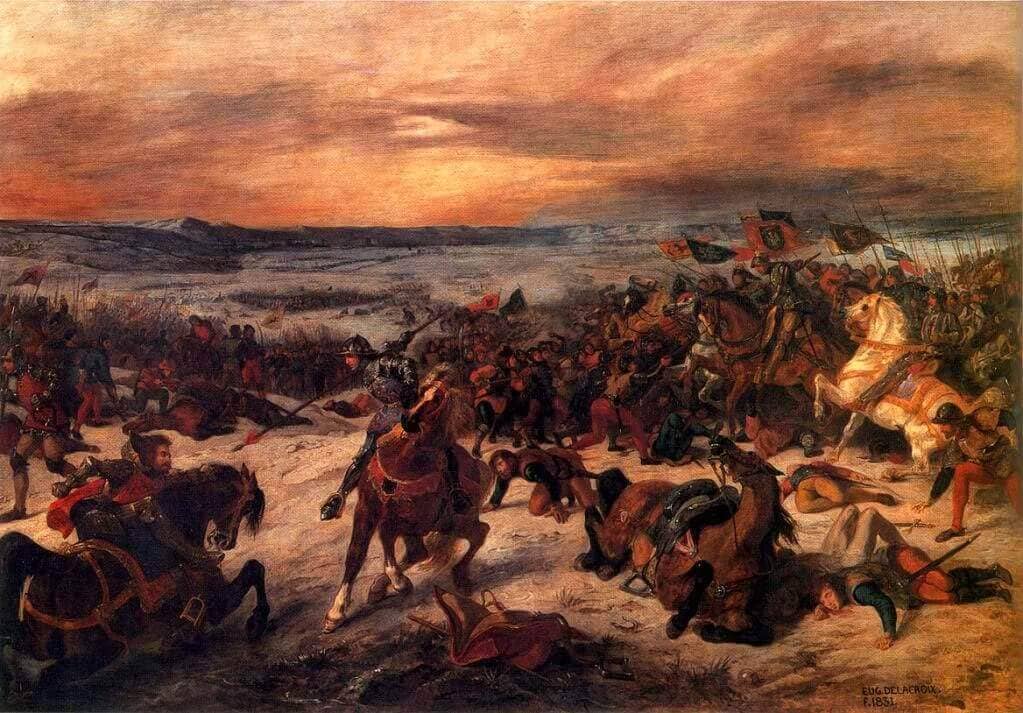
The Battle of Nancy was the result of the first official commission the artist ever received, in September, 1828. The final subject was decided only after many discussions with the King, the Minister of the Interior, the City Administration, and the Royal Society of Sciences, Arts, and Letters of Nancy. The episode agreed upon was the death of Charles the Bold, Duke of Burgundy, killed by a knight of Loreraine, Claude de Bauzemont, on January 5, 1477.
Delacroix immediately began his research and produced innumerable sketches and preparatory studies of the overall project as well as its many details. The projected work remained in his studio during the artist's trip to Morocco, and was finished only on his return. Yet it bears the date of 1831.
Even more than Delacroix's romantic penchant for the Middle Ages, what is striking about this canvas is the exalted enthusiasm with which the artist details the murderous tumult of battle. Beneath a sky rent by dazzling bolts of light, we see a desolate landscape, covered with snow which in the background assumes bluish tints in a manner anticipating the Impressionist vision. A wild melee is taking place here, in which tumultuous forms and warm browns and reds swarm together in a dynamism, a violence inherited from the battle scenes of Peter Paul Rubens. The composition is audaciously conceived with an almost empty space at the center. As for the protagonist of the drama, Charles the Bold, he disappears into the frame of the picture at the far left, and we can read there the symbol of his brutal disappearance from the political scene.

